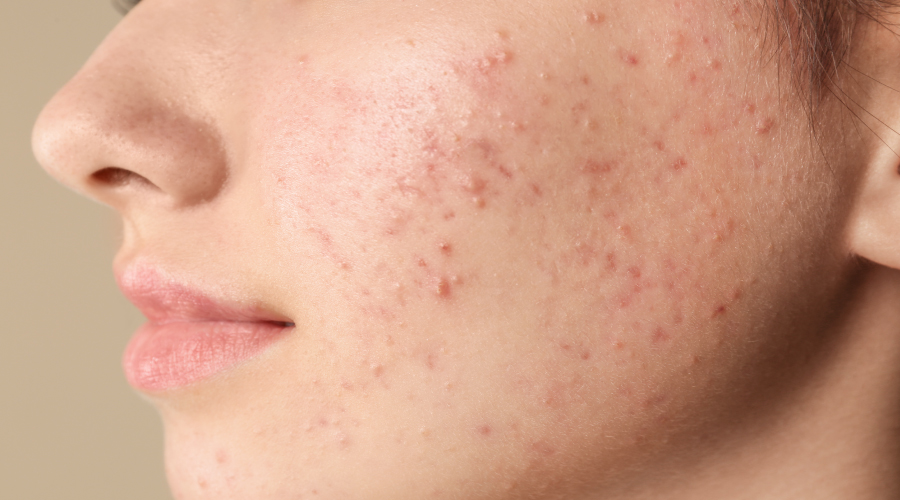The bothersome pimple marks that acne leaves behind are almost the only thing as irritating. While the pimple may only linger for five to seven days at most, the acne scars it frequently leaves behind might last for weeks.
What are pimple marks?
Pimple marks and spots, also known as post-inflammatory hyperpigmentation (PIH), are areas of increased pigmentation that develop after an acne breakout. When acne heals, it can leave behind dark or red marks on the skin, making the skin appear uneven and blemished. These marks occur due to an overproduction of melanin, the pigment responsible for skin color.
How to get rid of pimple marks?
When seeking treatment for pimple marks and spots, it is essential to consider several factors. Firstly, understanding the individual’s skin type and sensitivity is crucial to determine the most suitable treatment approach. Secondly, consulting a dermatologist or skincare professional is recommended to ensure an accurate diagnosis and personalized treatment plan. They can guide you on the most effective treatment options based on their specific concerns and skin condition. Additionally, practicing good skincare habits, such as using sunscreen to protect the skin from further damage and avoiding picking or squeezing pimples, can help prevent the worsening of pimple marks and spots. The treatments include:
Face and Body Peels: Face and body peels are cosmetic treatments that use chemical exfoliants to improve the texture and appearance of the skin. These peels involve applying a solution containing AHAs, BHAs or other chemicals to the skin, which helps remove the outermost layer of dead skin cells and stimulate cellular turnover. Face peels are specifically designed for the face, while body peels can be used on larger areas such as the back or chest. Peels can help fade pimple marks and spots by promoting skin cell regeneration and reducing pigmentation irregularities. Top brands like VLCC offers a range of face and skin peeling treatments like Pumpkin peel, Mango peel, Vodoo Magic or Black peel.
Skin peel on face can be customized based on the severity of the pimple marks and spots.
Medical Treatments: The best way to treat acne scars is with medicated creams applied as spot treatments, particularly those with skin-lightening ingredients like azelaic acid and kojic acid. Salicylic acid may lessen the scarring while also treating fresh acne by reducing edoema and inflammation in the area. AHAs like lactic, azelaic, or glycolic acid assist exfoliate the skin while also removing pimple marks since they speed up the skin’s cell turnover and bring fresher, more even-toned cells to the surface. Retinols function similarly since they hasten cell regeneration.
Home remedies: The easiest way to get rid of acne scars at home is to scrub 2-3 times per week to lighten your overall skin. Check to see if you don’t have any active acne, as scrubbing might spread bacteria and make your breakouts worse. Use a mixture of gram flour (besan), turmeric powder, lime juice, milk, and water, beaten into a paste, as one of the best homemade scrubs to brighten skin generally and eliminate pimple marks. Apply this to your entire face, wait 30 minutes, then wash it off. You can also apply tomato pulp to your skin to eliminate excess oil and lighten any dullness brought on by persistent acne and outbreaks.
How to prevent acne marks?
When healing from acne, refrain from using harsh products on your skin or popping any pimples that are already there. Avoid irritating your skin by wiping it with rough towels, and avoid over-applying acne scar medicine in an effort to hasten the healing process. If you frequently get acne, keep your skin clean.
It is important to note that treating pimple marks and spots takes time and patience. Results may not be immediate, and multiple sessions or ongoing treatments may be required to achieve desired outcomes. It is crucial to follow the recommended treatment plan and maintain consistency in skincare routines to optimize results and minimize the risk of skin irritation or complications.
